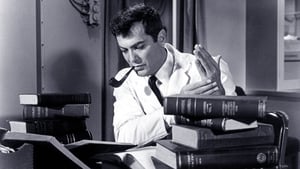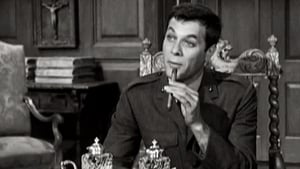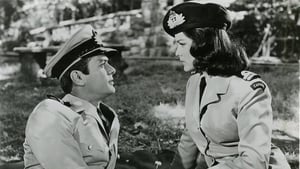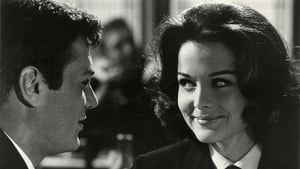Video Sources 0 Views
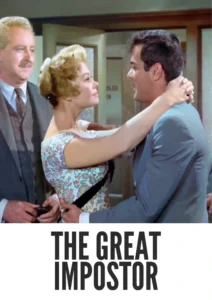
Synopsis

Step into the audacious world of Ferdinand Waldo Demara Jr. with The Great Impostor, a captivating true crime comedy caper from 1960, now beautifully colorized for a viewing experience that brings his unbelievable exploits to life. This film, starring Tony Curtis as the charismatic conman, directed by Robert Mulligan, delivers a thrilling blend of humor, drama, and suspense as Demara impersonates a series of professionals with astonishing success. Perfect for fans of true stories, classic film enthusiasts, and those who enjoy a good laugh, this HD download brings a remarkable piece of 20th-century history to your screen. You can also call it: Will the Real Fred Demara Please Stand Up??
The Great Impostor follows the extraordinary life of Ferdinand Waldo Demara Jr., a man who, driven by a restless spirit and an insatiable desire for something more, embarks on a series of audacious impersonations. Quitting high school and failing to find satisfaction in ordinary life, Demara joins the U.S. Army, but his lack of credentials holds him back. On a whim, he forges documents and becomes a U.S. Marine.
When his lie is exposed, Demara, facing military prison, fakes his own suicide and seeks refuge in a monastery, attempting to become a Trappist monk. Despite his efforts, he’s asked to leave and eventually imprisoned as a wanted Marine. After being released early for good behavior, he manipulates the warden into revealing details of his life, then steals his identity, landing a job as an aide in a Texas penitentiary.
Fleeing blackmail, Demara joins the Royal Canadian Navy as a doctor, using forged credentials. Assigned to a destroyer during the Korean War, he’s thrust into performing surgery, saving lives and earning recognition as a hero. However, the publicity leads to his exposure, but his stellar service earns him a swift discharge.
The film culminates with Demara’s apprehension by state police, only to escape again and arrive at FBI headquarters disguised as a federal agent assigned to hunt himself down. Through it all, The Great Impostor captures Demara’s charisma, quick wit, and the sheer audacity of his deceptions.
The film boasts a talented cast of actors who bring this unbelievable story to life:
-
Tony Curtis as Ferdinand Waldo Demara Jr. / Martin Donner / Dr. Gilbert / Ben W. Stone / Dr. Joseph Mornay / Robert Boyd Hammnd
-
Edmond O’Brien as Capt. Glover
-
Karl Malden as Father Devlin
-
Arthur O’Connell as Warden J.B. Chandler
-
Gary Merrill as Pa Demara
-
Joan Blackman as Lt. Catherine Lacey
-
Raymond Massey as the Abbot
-
Jeanette Nolan as Ma Demara
-
Sue Ane Langdon as Eulalie Chandler
-
Frank Gorshin as Barney
The Great Impostor blends elements of true crime, comedy, and drama, creating a unique and entertaining cinematic experience. Its lighthearted approach to a potentially dark subject matter makes it a captivating and engaging film for a wide audience.
Released in 1960, The Great Impostor is based on the true story of Ferdinand Waldo Demara Jr., one of the most successful impostors of the 20th century. Demara’s exploits captured the public’s imagination, and his story has been told in books, articles, and films. The film offers a glimpse into a time when it was perhaps easier to assume false identities, before the advent of modern technology and widespread documentation.
This colorized version of The Great Impostor has been carefully restored using modern digital techniques, enhancing the visual appeal while preserving the film’s original charm. The colorization process involved analyzing the grayscale tones of the original black and white footage and assigning appropriate colors to each scene. This painstaking process brings new life to the characters and settings, making the story even more engaging for modern audiences. While some may debate the merits of colorizing classic films, it introduces these films to a broader audience, ensuring their legacy for future generations.
The film score created by Henry Mancini should be noted for how it encapsulates the dramedy tone of the movie.
-
: Robert Mulligan
-
: Liam O’Brien, Robert Crichton
-
: the book by Robert Crichton
-
: Robert Burks
-
: Aaron Stell
-
: Universal International Pictures
-
: Universal Pictures
-
: 112 minutes
-
: MP4
-
: HD (1080p)
-
: Compatible with most devices, including smartphones, tablets, computers, and smart TVs.
The Great Impostor (1960) has been praised for its entertaining storyline, strong performances, and lighthearted approach to a fascinating true story. The film has also been noted for its depiction of Demara as a charismatic and complex figure, neither entirely good nor entirely bad. Despite the ethical implications of his actions, Demara is portrayed as a likable and even sympathetic character, thanks in large part to Tony Curtis’s performance.
-
: What is The Great Impostor about?
-
A: The Great Impostor is a true crime comedy about Ferdinand Waldo Demara Jr., a man who impersonated various professionals throughout his life.
-
-
: Is The Great Impostor (1960) based on a true story?
-
A: Yes, The Great Impostor is based on the true story of Ferdinand Waldo Demara Jr.
-
-
: Is this version of The Great Impostor colorized?
-
A: Yes, this version has been professionally colorized to enhance the viewing experience.
-
-
: What makes The Great Impostor interesting?
-
A: The Great Impostor offers a fascinating glimpse into the life of a real-life conman and the ease with which he was able to deceive people and institutions.
-
-
: What is the download format?
-
A: The download format is MP4, which is compatible with most devices.
-
-
: What resolution is the download?
-
A: The resolution is HD (1080p), providing a high-quality viewing experience.
-
Watch The Great Impostor Today!
